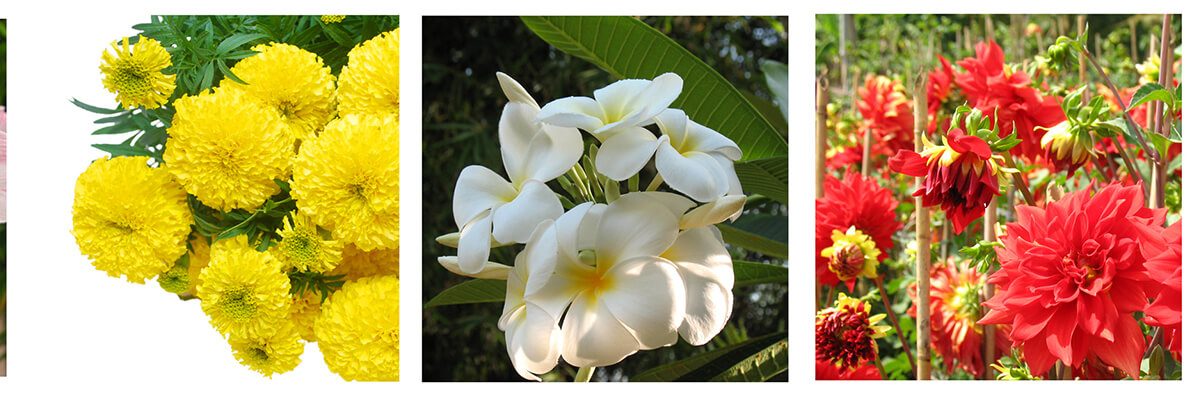One of the most enjoyable results of garden care is that the plants reward you by blooming fresher and longer. We’ve written for you the tips and tricks of energizing flowers and prolonging the life of flowers.
Tips for making the flowers blossom in spring 1: Weeding out
In its simplest terms of explanation, it is the process of collecting faded flowers that can damage newly blooming flowers and buds. Picking past flowers is the most useful activity during the growing season. It allows you to make closer contact with plants, allowing you to feel complex flower forms and scents, as well as to recognize problems that have occurred or will occur. Unwilled withered flowers are the source of disease formation in the plant. If you grow your flower for decorative value, or if you don’t mind getting fresh seeds, tear off the growing flower head while weeding. It is one of the most important tips of blossoming in spring, because plants tend to turn their energy into seed production instead of blossoming, and after a while they are too old.
How should one year plants be combed out?
Many one-year plants fade into seed and die. To ensure that these plants bloom all summer, remove them regularly with your thumb and index finger, and immediately prune the flower head above the seed sack. For stiffer plants, use a kitchen or flower shears. Do not leave long, non-exile trunks, because they turn brown and destroy all positive effects. Keep in mind that you must regularly pick out fading flowers to prolong blossoming.
How should many years old plants be combed out?
The lifespan of many plants can be extended by regular sorting with garden shears, which greatly improves their appearance.
Delphinium, Lupin, Verbascum, Penstemon, Campanula: Cut the flowering main stem from the bottom, immediately over a side shoot, before all the flowers have faded yet. This allows the emergence of small, secondary flowering shoots.
Flowers with daisy: Shasta (Leucanthemum), Osteospermum, Anthemis and Gaillardia.
Wide single flowers: Scabiosa, Paeonia, Daylily, Dahlia, Bearded Iris.
How should roses be combed out?
Using scissors is one of the tricks of causing flowers blossoming in spring. Cut the faded leaves between all rose varieties including a cluster rose or singular rose, or even arbor rose. In bush-shaped roses, you can cut the branches of weak roses coming from strong buds behind them and make the rose reopen.
Extending the lives of flowers
Some plants that normally bloom once or twice when left to alone will bloom one after the other when pruned with flower shears and well fed and watered for revitalization. Some, even if they do not bloom, are freed from the disease as if they were reborn, equipped with bright leaves, appearing fresh and young. You can do a lot of decorative work in the garden, including shrubs, vines, perennials and perennials, to ensure long lasting flowers from summer to autumn and to enjoy decorative flower heads.
Tips for energizing your flowers in spring 2: Energize your flowers
One of the rules of garden care is to energize your flowers; When you cut something out of the flower, when you tear off a shoot or a leaf, you must give the plant the energy to regenerate it. With spring rains and warm sunlight, the fading leaves may weaken later. However, after some medication and a dose of fertilizer, it can be blossomed again with a quick shear. You can easily experiment with the following plants:
- Creeping campanulas) (some of them)
• Geranium-(cranesbill) (most of them)
• Lamium maculatum- (deadnettle)
• Nepeta x faassenii- (catmint)
Do spot-on feeding and irrigation
In these times when environmental awareness increases, it is very important to irrigate only the necessary place of the garden in the most effective manner. To this end, it is necessary to maintain the moisture there by applying a deep manure cover to the already moistened ground through the rains as winter ends. Similarly, you can do more harm than good by giving too much fertilizer or using the wrong mixture. However, with a well-defined nutrition program and irrigation, you can keep the plants alive even on weak and water-repellent soils and in places with little rain.
Keep an eye out for the weather as an unexpected arid spring can be a problem for your plants. If the soil is too dry when buds are formed, some plants blooming in winter and spring can be damaged. Wall camellias, for example, want to be watered frequently from autumn to spring so that their buds do not fall out. In extremely hot summers, moisture-loving Rudbeckia and Eupatorium require some refreshing water to prevent fading.
Feed the flowers
Flowers require potassium. The chemical symbol of potassium is K’ or known as potassium hydrate. If the plant is shy in blossoming, it suffers from potassium deficiency or may be over-fed with abundant nitrogenous nutrients that lead to bushy and leafy growth.
*To those who raise Alchemilla mollis: Alchemilla mollis, the favorite flower of those who arrange flower arrangements, makes lemon-colored flowers foam on the curved and inward pit leaves, but in the summer the seeds form and the leaves lose their magnificence. By cutting with a pair of scissors or a lawnmower at the ground level, you will not only prevent unwanted cheeky seedlings, but also obtain new leaves with good watering and a dose of fertilizer.
• Keep in mind! Do not weed out long-lasting plants that produce attractive flower-heads, as they extend flower exposure until autumn. It is also useful for arrangements. Some of the best examples are decorative flower bulbs, Nigella, Eryngium, Papaver rhoeas, Cardoon, Echinops.
After completing the process, you became familiar with the tips section of the blossoming in the spring and prolonging the life of the flowers. Now let’s go to your flowers and apply what we’ve learned. There are different care methods for the care of fragrant flowers. Don’t forget to take a look at our article titled as Landscape








